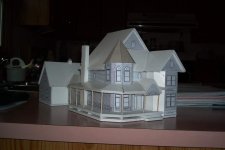Jeff396
Veteran Member
And make sure the box is secured better than a typical box for a light. In our last house in Arizona I went with Hunter original ceiling fans. They are cast iron and they weigh a ton! It was a real chore to install those things especially on the higher ceilings. I always prewire my rooms for ceiling fans and a light. But since I can't stand ceiling lights and will never put them in I run three strand wire. That way I don't have to have that switch on the wall that does nothing and a future owner can add a light by using one of those duel function switches. So many details, it's a wonder we don't forget more. We've had four houses built now and are forgetting less each time we do it./w3tcompact/icons/smile.gif
Jeff

Jeff



